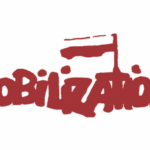The article argues for a broader understanding of youth participation in far-right politics and sets two principal research goals. First, to reconstruct the breeding ground of far-right youth activism at the grassroots level, by unveiling potential links between the subcultural, social movement, and party arenas. Second, to investigate Jobbik’s appeal through the role of different elements used to justify joining a particular movement.
The Movement for a Better Hungary (Jobbik) qualifies as one of the most successful far-right organisations in contemporary Europe. Through its swift rise in popularity and entry to parliament, the ‘movement party’ has been able to alter the Hungarian public discourse, existing patterns of party competition, additionally exerting effects on the government’s policy agenda. At least part of these effects should be attributed to Jobbik’s popularity among the youth; its overrepresentation among those aged below 30 is, by now, an established fact within national politics. The article argues for a broader understanding of youth participation in far-right politics and sets two principal research goals. First, to reconstruct the breeding ground of far-right youth activism at the grassroots level, by unveiling potential links between the subcultural, social movement, and party arenas. The study will chart far-right milieus in Hungary and their overlap with Jobbik: thus, it will introduce supply-side factors that contributed to its popularity among the youth. Second, we seek to investigate Jobbik’s appeal through the role of different elements used to justify joining a particular movement. The article uses primary data drawn from interviews and focus groups with students, and in-depth interviews with leaders of Jobbik.
Pirro, Andrea L. P., and Dániel Róna. 2018. ‘Far-Right Activism in Hungary: Youth Participation in Jobbik and Its Network’. European Societies 0 (0): 1–24. Online First28/10/2025

14/10/2025

Journal Article - 2025
Journal Article - 2023
Journal Article - 2023
Journal Article - 2023
Journal Article - 2023
Monograph - 2023
Monograph - 2022
Monograph - 2022
Journal Article - 2021
Journal Article - 2021